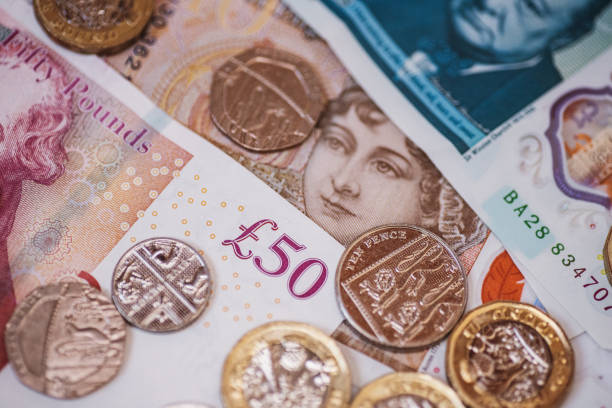
The Pound Sterling faces offers against its major peers on Friday after the UK Retail Sales data for May declined faster than expected.
Month-on-month Retail Sales slumped by 2.7%, faster than estimates of 0.5% decline.
The BoE held interest rates steady in the monetary policy announcement on Thursday.
The Pound Sterling (GBP) faces selling pressure against its major peers on Friday after the release of the weaker-than-projected United Kingdom (UK) Retail Sales data for May. The Office for National Statistics (ONS) reported that Retail Sales, a key measure of consumer spending, declined by 2.7% on month. Economists expected the consumer spending measure to have contracted at a moderate pace of 0.5% after expanding by 1.3% in April, upwardly revised from 1.2%.
Year-on-year Retail Sales unexpectedly declined by 1.3%, while they were anticipated to have grown by 1.7%. A significant slump in sales receipts at Department stores, and Textile Clothing & Footwear stores led to a sharp decline in the figures
Weak UK Retail Sales data often encourages traders to raise bets supporting more interest rate cuts from the Bank of England (BoE). Traders expect the BoE to cut its key borrowing rates two times in the remainder of the year after the monetary policy announcement on Thursday, in which the central bank kept them steady at 4.25%, as the consensus showed, with a 6-3 vote majority.
Three Monetary Policy Committee (MPC) members argued in favor of lowering interest rates again, citing that "a material loosening in labour market conditions" makes the case for further monetary policy easing.
BoE Governor Andrew Bailey retained the “gradual and careful” monetary easing guidance, stating that interest rates remain on a “gradual downward path”. He warned that softening labor market conditions and rising energy prices amid escalating Middle East tensions are key risks to the economy.
Going forward, the next trigger for the Pound Sterling will be the UK preliminary S&P Global/CIPS Purchasing Managers’ Index (PMI) data for June, which will be released on Monday.
Daily digest market movers: Pound Sterling against US Dollar
The Pound Sterling faces selling pressure after failing to break above the psychological level of 1.3500 against the US Dollar (USD) on Friday, and weak UK Retail Sales data for May. The GBP/USD pair struggles to extend its Thursday's recovery move and trades around 1.3470 at the time of writing.
The US Dollar also trades lower, corrects sharply after comments from the White House indicating that the US has no intention to strike Iran in the coming days, which lifted the risk appetite of investors.
No immediate attacking plans from Washington have also diminished the demand for safe-haven assets, sending the US Dollar Index (DXY) lower to near 98.60 from the weekly high of 99.15 posted on Thursday.
“Based on the fact that there is a substantial chance that negotiations may or may not take place with Iran in the near future, I will make my decision whether or not to go, within the next two weeks,” Press Secretary Karoline Leavitt said, ANI News reported.
Financial market participants were anticipating that the US could join the Israeli Defence Forces (IDF) and accelerate airstrikes on Iran, aiming to prevent Tehran from building nuclear warheads. Fears of the US attacking Iran directly stemmed after a report from Bloomberg on Wednesday indicated that senior US officials are preparing for the possibility of a strike on Iran in the coming days. The news increased demand for safe-haven assets, such as the US Dollar.
On Wednesday, fresh projections from the Federal Reserve (Fed) that it will cut interest rates fewer times in 2026 and 2027 than anticipated in March also supported the US Dollar. According to the Fed’s dot plot, policymakers collectively revised the interest rate target for 2026 and 2027 to 3.6% and 3.4%, respectively. In the policy meeting, the Fed held interest rates steady in the range of 4.25%-4.50% for the fourth straight meeting and warned of upside risks to inflation.
For fresh cues on the inflation outlook, investors will focus on the flash US S&P Global PMI data for June, which is scheduled to be released on Monday. The PMI report will show the change in prices paid by business owners for inputs and selling prices amid the imposition of the tariff policy by US President Donald Trump.
Technical Analysis: Indecisiveness ahead of the weekly close

The Pound Sterling faces barricades around the psychological level of 1.3500 against the US Dollar, which coincides with the 20-day Exponential Moving Average (EMA), suggesting that the near-term trend is uncertain.
The 14-day Relative Strength Index (RSI) drops to near 50.00, indicating a sideways performance in the near term.
Looking down, the May 16 low around 1.3250 will act as a key support zone. On the upside, the three-year high around 1.3630 will act as a key barrier.
* The content presented above, whether from a third party or not, is considered as general advice only. This article should not be construed as containing investment advice, investment recommendations, an offer of or solicitation for any transactions in financial instruments.

